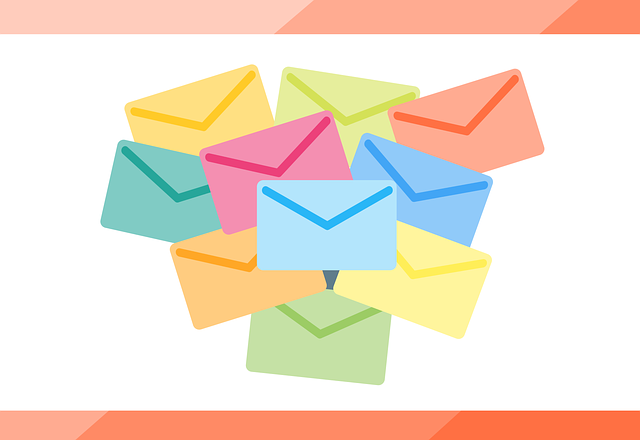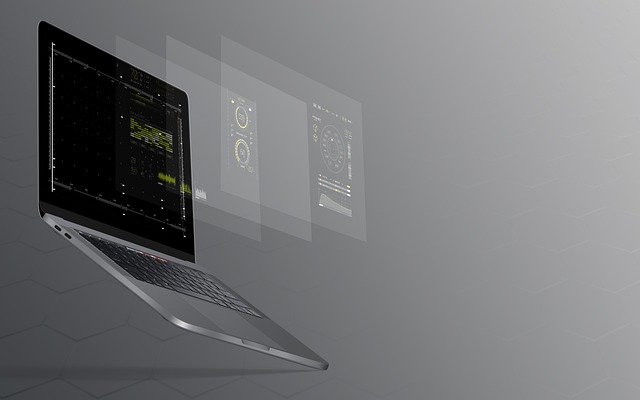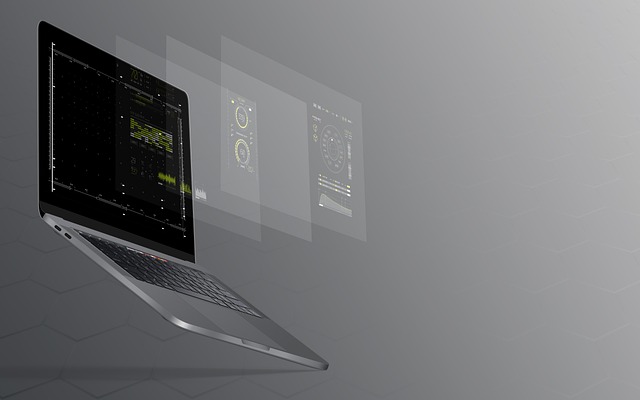Have you ever opened an email and immediately felt overwhelmed by its cluttered layout? We’ve all been there, desperately searching for the important information that seems to be buried within a sea of text and images. But fear not! In this article, we will unveil the key elements of effective email layouts that will not only capture your readers’ attention but also keep them engaged.
Imagine receiving an email with a subject line that immediately grabs your attention, enticing you to open it. As you click, you are greeted with a clean and organized layout, making it easy to navigate through the content. Visuals that are not only aesthetically pleasing but also relevant to the message further enhance the overall experience.
But it doesn’t stop there! Strategically placed call-to-action buttons guide your readers towards the desired action, whether it’s making a purchase or signing up for an event. And with more and more people accessing emails on their mobile devices, a mobile-friendly design is crucial to ensure your message reaches its intended audience.
Lastly, personalization and segmentation add a personalized touch, making your readers feel valued and understood. So, if you’re ready to revolutionize your email marketing strategy, keep reading to discover the key elements that will make your emails stand out from the crowd.
Key Takeaways
-
Clean and organized layout: A key element of effective email layouts is to have a clean and organized design that is easy to navigate. This includes clear headings and subheadings, bullet points and numbered lists, and the use of bold or italicized text for important points.
-
Compelling visuals and interactive elements: Including compelling visuals such as images or videos can make the email more engaging and visually appealing. Additionally, incorporating interactive elements like buttons or surveys can increase user engagement and encourage click-through rates.
-
Mobile-friendly design: With the increasing use of mobile devices, it is crucial to ensure that emails are optimized for mobile viewing. This means that the layout should be responsive and adapt to different screen sizes, making it easy for users to read and interact with the email on their mobile devices.
-
Consistent branding: Maintaining branding consistency across all email communications is essential. This includes using the same color scheme, fonts, and logo to create a cohesive and recognizable brand identity. Consistent branding helps to build trust and familiarity with subscribers, increasing the likelihood of them engaging with the email content.
Concise Subject Lines
Make sure your subject lines are short and clear, so that busy recipients can quickly understand the purpose of your email and prioritize their responses. Engaging subject lines are the key to grabbing your recipient’s attention and increasing the chances of your email being opened.
Think of your subject line as a headline that needs to be catchy and intriguing. Use keywords that’ll pique their curiosity and make them want to open your email.
Additionally, consider using email analytics to track the open rates and click-through rates of your emails. This’ll help you understand what subject lines are most effective and allow you to tailor future emails accordingly.
Once you’ve captured their attention with an engaging subject line, it’s important to follow through with clear and organized content, which we’ll discuss next.
Clear and Organized Content
Ensure that your email content is clear, organized, and easy to navigate. A well-structured email with a logical flow makes it easier for the recipient to understand and respond to your message.
Start by using headings and subheadings to break up the content and make it more readable. Use bullet points or numbered lists to present information in a concise and organized manner. Keep your sentences and paragraphs short to make the content more digestible.
Additionally, consider using bold or italicized text to highlight important points or key takeaways. By structuring your email content effectively, you can ensure that your message is easily understood and acted upon.
Now, let’s move on to the next section and talk about the importance of compelling visuals in your emails.
Compelling Visuals
Capture your audience’s attention with visually appealing elements in your emails. Incorporating compelling visuals is a great way to make your emails stand out and leave a lasting impression. By using interactive elements and maintaining branding consistency, you can create a visually engaging experience for your readers. Consider adding a 3 column and 4 row table in your email layout to present information in a clear and organized manner. This not only adds a level of sophistication to your writing but also makes it easier for your audience to digest information. With visually appealing elements, you can effectively communicate your message and increase the chances of your readers taking the desired action. Speaking of action, strategically placed call-to-action buttons will be the next focus of our discussion.
Strategically Placed Call-to-Action Buttons
Placing call-to-action buttons strategically in your email can significantly increase the click-through rates. For example, a clothing retailer saw a 30% increase in sales when they placed a prominent ‘Shop Now’ button at the top of their email.
By using engaging copywriting and incorporating persuasive language into your call-to-action buttons, you can grab the reader’s attention and entice them to take action.
A/B testing different button designs and placements can help you determine which ones resonate best with your audience. Experiment with different colors, sizes, and wording to find the winning combination that drives the most conversions.
Once you have mastered the art of strategically placed call-to-action buttons, it’s time to shift focus to another crucial element of effective email layouts: mobile-friendly design. This ensures your emails are optimized for viewing on various devices and guarantees a seamless user experience.
Mobile-Friendly Design
Make sure your emails are optimized for mobile devices to provide a seamless user experience and engage your audience on the go. With the increasing use of smartphones, it’s essential to have responsive formatting that adapts to different screen sizes.
A user-friendly interface is crucial to ensure that recipients can easily navigate through your email and take action. To achieve this, consider the following:
- Simplify your layout: Use a single column design to ensure readability on smaller screens.
- Use larger fonts and buttons: Make it easy for users to read and click on your call-to-action buttons.
- Minimize scrolling: Keep your email concise and to the point, so users don’t have to scroll endlessly.
By implementing these mobile-friendly design elements, you can enhance the effectiveness of your email marketing campaigns.
Now, let’s move on to the next section about personalization and segmentation, where we’ll explore how to tailor your emails to specific audiences.
Personalization and Segmentation
Segmentation and personalization are essential for creating targeted and tailored emails that resonate with your audience and drive engagement. By utilizing personalization techniques and segmentation strategies, you can deliver highly relevant content to each individual subscriber, increasing the chances of them taking the desired action.
To effectively implement personalization, you need to gather data about your subscribers, such as their demographics, preferences, and past interactions with your emails. This information can be used to create dynamic content that speaks directly to each subscriber’s interests and needs. Additionally, segmentation allows you to divide your email list into smaller groups based on specific criteria, such as location or purchase history. This enables you to send more targeted messages that are highly relevant to each segment, resulting in higher open and click-through rates.
Here is an example of how you can use segmentation and personalization in your email campaigns:
| Segment | Personalization Techniques |
|---|---|
| New Subscribers | Welcome emails with personalized recommendations based on their interests. |
| Inactive Customers | Re-engage with a special offer tailored to their previous purchases. |
| VIP Customers | Exclusive content and promotions to reward their loyalty. |
| Local Customers | Send location-specific offers and events. |
By utilizing these personalization techniques and segmentation strategies, you can create emails that are more impactful, engaging, and effective in driving the desired actions from your audience. So, take the time to gather data, segment your list, and deliver highly targeted messages that truly resonate with each individual subscriber.
Frequently Asked Questions
How can I ensure that my email subject line stands out and catches the recipient’s attention?
To make your email subject line stand out and grab the recipient’s attention, you need to be clever and concise. Craft a headline that piques curiosity or offers a compelling benefit. Use action verbs and exciting language to create a sense of urgency. Consider adding personalization to make it more relevant and appealing.
Remember, your subject line is the first impression, so make it count!
What are some effective strategies for organizing content in an email to make it easy to read and understand?
To ensure your email is easy to read and understand, employ effective strategies for personalization and use white space wisely.
Personalization involves tailoring your content to the recipient’s needs and interests. Use their name, refer to previous interactions, and address their specific concerns.
Additionally, make use of white space to break up text and create visual clarity. This allows readers to easily navigate through your email, grasp the main points, and take action.
What types of visuals can I use in emails to make them more engaging and visually appealing?
To make your emails more engaging and visually appealing, consider incorporating visual elements that capture attention and enhance the overall message.
For example, you could include vibrant images or infographics to illustrate important points or data. These visual elements not only break up the text but also make the content more memorable and enjoyable to read.
By incorporating such visual elements strategically, you can create an email that stands out and effectively communicates your message.
Where should I place my call-to-action buttons in an email to maximize click-through rates?
To maximize click-through rates and improve the effectiveness of your call-to-action buttons in emails, strategic placement is key. Consider placing your CTA buttons near the top of the email, where they’re easily visible and accessible to the reader.
Use contrasting colors and bold fonts to make them stand out. Additionally, ensure that your CTA buttons are clear and concise, compelling readers to take action.
By maximizing CTA placement, you can significantly boost your click-through rates and drive desired actions from your email recipients.
How can I optimize my email design to ensure it is easily accessible and readable on mobile devices?
To optimize your email design for mobile devices, focus on mobile optimization, readability, accessibility, and design optimization.
Ensure that your email is responsive and adapts to different screen sizes. Use a legible font size and clear, concise messaging. Make sure your call-to-action buttons are easily clickable with enough spacing around them.
Incorporate a single-column layout and minimize scrolling. Simplify your design and avoid clutter.
By optimizing your email for mobile, you’ll capture your audience’s attention and drive better engagement.
Conclusion
In conclusion, crafting an effective email layout is crucial for capturing your audience’s attention and driving desired actions. By incorporating concise subject lines, clear and organized content, compelling visuals, strategically placed call-to-action buttons, mobile-friendly design, and personalization and segmentation, you can significantly increase the success of your email campaigns.
Did you know that personalized emails deliver six times higher transaction rates? This statistic highlights the importance of tailoring your messages to meet individual preferences, ultimately leading to stronger engagement and conversions.
So, start implementing these key elements today and watch your email marketing soar to new heights.









